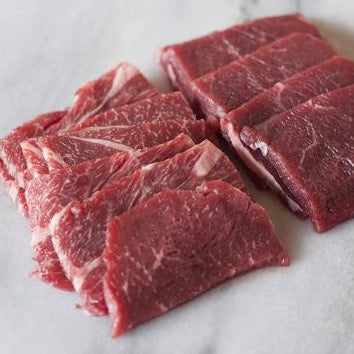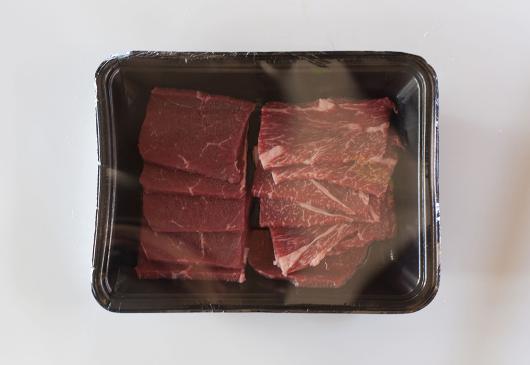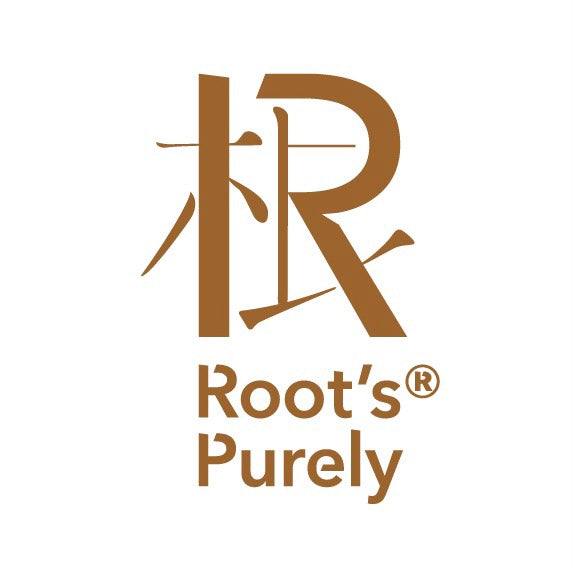〈 Aso District, Kumamoto Prefecture 〉 Hiroaki Ii
Kusaushi (for yakiniku) 150g
Kusaushi (for yakiniku) 150g
Couldn't load pickup availability
[Natural pasture grass cattle raised in a mountain village in Aso County by Hiroaki and Shunsuke Ii] 
<40 years of passion for Kusaushi>
Ubuyama Village, Aso District, is located at an altitude of 800m. It is here, where the outer rim of Mt. Aso and the foot of Mt. Kuju meet, and where the abundant water of the Ikeyama Spring, known as one of Japan's 100 famous waters, springs forth, that Hiroaki Ii's Ikeyama Ranch is located. He has been passionate about Kusaushi for 40 years. He interacts with the cows almost every day, morning and evening, to raise healthy and delicious Kusaushi. The Kusaushi live in natural pastures and spacious barns, and each and every one of them has a calm face. The sight of the Kusaushi grazing leisurely on the grasslands of Aso has become synonymous with Aso.

Hiroaki Ii and his son-in-law Shunsuke spend every morning and evening interacting with the Kusaushi. "The Kusaushi are like family members." When Ii approached, the Kusaushi came over and began to lick his face happily.
<Rice is eaten on the Aso prairie>

Mr. I's grass cows are raised on an abundance of grass and drinking water from the rich Ikeyama water source. No antibiotics or other drugs are used. The grass cows, raised from calf age in the majestic grasslands of Aso and living in spacious cowsheds, are truly stress-free. Their faces are calm and they look very happy. And their fur is simply beautiful. "Every day, they eat 30-40kg of wild plants and grass in the pasture and walk 3-6km. With parent-child grazing, the calves are used to eating grass even after weaning. They are much healthier than humans (laughs)."

It is said that the average cow's feed is 10% roughage such as straw, and 90% concentrated feed (※1) mainly made up of corn. In this environment, Mr. I practices a high-roughage feeding method (※2) in which the ratio of roughage is increased to 35%. "Cows are naturally herbivorous animals. Cows that grow up eating a lot of grass in a natural way will have strong stomachs and become healthy." After 9 months of age, the grass cows are raised in a cowshed. They are fed silage, which is made by wrapping cut grass in plastic wrap and fermenting it with lactic acid. The only odor in the cowshed is the fermented smell of this silage, and there is no unpleasant odor at all. "My grass cows don't moo much, do they?" You say, and it's true. You don't hear them much. In fact, the moo, which is synonymous with cows, is a sign that they are hungry. Mr. I's grass cows always have good quality food, so they are in an environment where they are never hungry. Wow, I'm so envious.
<Livestock farming that brings happiness to people, cows, and Satoyama>

It is said that the current livestock industry is full of distorted problems. In order to produce delicious and tender marbled meat, cows are fed a lot of concentrated feed and made to become overweight. Overweight cows are what humans would call "super metabolic syndrome." Naturally, they are more susceptible to disease and are unhealthy. For this reason, antibiotics and other drugs are added to the feed. In the first place, most of the feed itself is imported feed that is genetically modified and uses pesticides. It is said that the cows are kept in small barns all their lives, and they become so fat that they can't even stand up on their own. In addition, a large amount of grain is consumed for livestock farming while poverty and hunger continue on a global scale. The environment is destroyed to produce that grain... The "high-quality marbled beef" produced in this way is certainly delicious, but it also creates many "?"s. Mr. I says, "I want to raise cows that are not raised for human convenience, but livestock farming that is friendly to people and the environment, where the cows can live happily." Making grass-fed cows that are friendly to both cows, people, and the earth. Grazing the grass cattle on the grasslands of Aso leads to the maintenance and conservation of the grasslands, and contributes to the protection of the Satoyama environment. The sight of grass cattle grazing on the magnificent grasslands of Aso has become a seasonal feature of Kumamoto and Aso, and is a valuable tourist resource.
<The finest red meat>

Mr. Ii also runs a guesthouse and farm restaurant called "Yama no Sato." I stopped by on my way home to try the Kusaushi beef, which is run by Yuri, Hiroaki's daughter and Shunsuke's wife. "Sorry to keep you waiting!" he said as he brought out the Kusaushi steak. The thick sirloin beef was dripping with juice, and just looking at it made my mouth water. "Here we go!" I took a bite. Silence. The flavor, aroma, and smell were indescribable... I forgot to talk and just ate. Mr. Ii's Kusaushi beef has a strong flavor and sweetness even without any seasoning. It is mainly red and not particularly fatty, but it is extremely soft. And there is no heavy feeling in the stomach after the meal. The taste of the meat, which pursues the flavor of the red meat rather than focusing on the marbling of marbled meat, was so exquisite that it made my whole body scream "delicious!"

Over the past 40 years, Mr. I has overcome many hardships and established the current method of fattening grass cattle by feeding them a lot of roughage, and has continued to do so to this day. Mr. I looks at the grass cattle with gentle, loving eyes. Mr. I will continue to raise grass cattle that are truly safe, secure, and healthy, which can only be done in Aso Sanzanmura.
*1: A term used to refer to feed given to livestock, as opposed to roughage, and is used in modern livestock farming to refer to feed that is particularly high in protein. It is provided for the purpose of producing marbled and marbled beef.
*2: Feed that contains 30% or more roughage in the dry matter intake. By feeding the animal a lot of grass, it is possible to raise the animal in conditions close to nature. The meat is high in red meat and has a light, tasty texture.
[Points to note when ordering]
Due to food hygiene reasons, we do not ship refrigerated products. All products will be shipped frozen in a separate parcel. Thank you for your understanding when placing your order.
Due to individual differences in the cow and the part of the cow (we use several parts suitable for slicing), the shape of the product you receive may differ slightly each time. However, there is no difference in quality, so please rest assured. Thank you for your understanding before placing your order.



Varieties
Varieties
Producer
Producer
Hiroaki Ii
Producing area
Producing area
Aso District, Kumamoto Prefecture
Farming method
Farming method
Species Information
Species Information
Size and Capacity
Size and Capacity
150g
raw materials
raw materials
Grass cow




